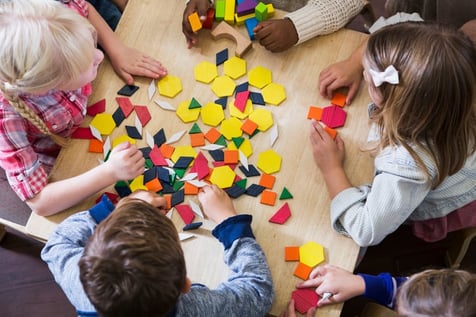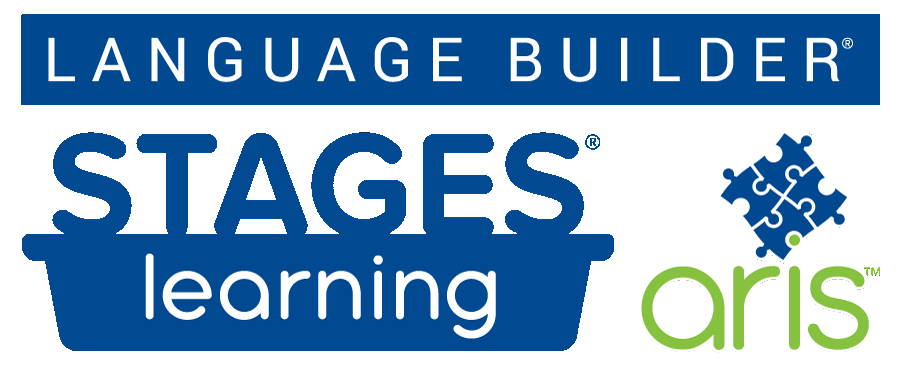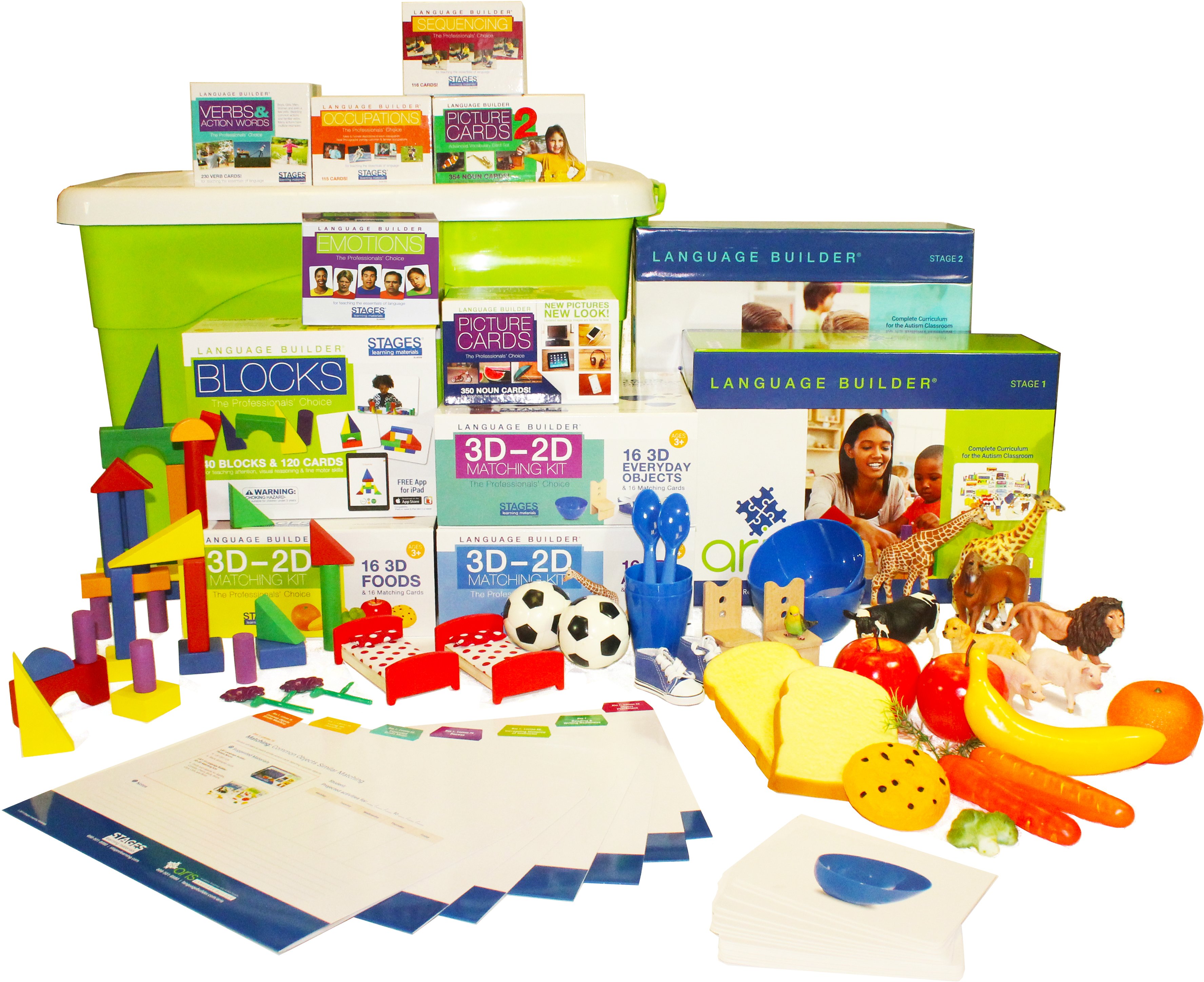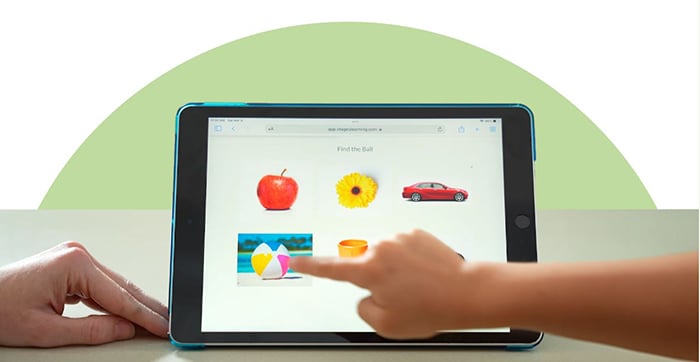
Red, Blue, Red, Blue: Using Patterns to Teach Early Math Skills
Teaching autistic children various patterns is a key foundational skill that will support their later math development. The following activities utilize Applied Behavioral Analysis (ABA) strategies to provide an engaging way to learn color, shape, and complex patterns for young autistic children as they develop early math skills.
The Value of Patterns in Math for Autistic Children
Beginning at very young ages, children recognize, respond to, and apply different patterns in the world around them. Patterns are a foundational skill for young autistic children as learning them creates an opportunity for visual and spatial development and thinking. Additionally, creating and extending patterns can support the necessary skill development needed for careers and everyday life. Patterns help autistic children make predictions, analyze information, sequence, and establish order. Using patterns to teach early math skills to autistic children adequately prepares them for later algebraic skills as they matriculate to higher grades.
The ARIS Connection
The ARIS® Academic Readiness Intervention System is based on the principles of ABA therapy and is a comprehensive, early autism curriculum kit. With everything conveniently assembled in one place, including manipulatives, a system for record-keeping, detailed lesson plans, and more, ARIS is an easy-to-use resource to support early math skills such as learning patterns. Many of the activities below come from the ARIS toolbox and use materials like the Language Builder: Math, Counting, and Sorting Kit, and the Language Builder: Stringing Beads Kit.
10 Activities to Teach Patterns
The following activities can be used to teach color, shape, and complex patterns to young autistic children. Many of the activities use resources embedded in ARIS or can be used with resources in your own home. As you prepare to implement these activities with your autistic child or student, be mindful of any items or activities that might trigger stimming behavior (i.e. if your autistic student has stimming behavior where they like to line things up, another activity may be more effective).
1. Pattern Pathways
This activity focuses on color patterns and supports a student’s gross motor abilities. Begin this activity by taping colored construction paper to the floor in a path that forms a pattern. Be sure to keep extra pieces of construction paper of each color. Then, allow your student to jump from one color to the next in the pattern path. When they reach the end, ask the student which color would come next. Once they select the correct color, place it next in the path, and they can continue to jump. You can then repeat this process. To add rigor, set up many different paths and let students choose which path they would like to complete and in which order.
2. Pattern Search
This activity focuses on shape patterns and requires the use of shape stamps. Begin this activity by spreading out a large sheet of poster or butcher paper. Then, using the shape stamps, have a student stamp any relevant shapes randomly all over the paper. On a separate sheet of paper, create a pattern using the shape stamps. Then, have the student use a marker to draw a line connecting the stamped shapes in the same order as the pattern. To make this activity more challenging, see if your student can do a three or four-shape pattern!
3. Pattern Card Game
For skill development in complex patterns, this game is great to play. Using patterned wrapping paper or construction paper, create a deck of cards. Then, use white index cards as a template to trace 10 to 15 of each color or pattern. Next, glue or laminate together one white index card and one colored/patterned piece of paper to form cards that are blank on one side. As students master the skill, you can add more colors and patterns to the deck later. After the cards are created, take all the cards, blank side up, and shuffle them to form a deck. Draw three or four cards to establish a pattern. Both you and your student should take five cards with the remaining cards in the deck in the center. Take turns placing the next card in the pattern from your hand. If none of your cards fit the pattern, draw from the remaining cards until you have the right card. Continue this process until someone runs out of cards, or until all the cards from the deck have been drawn!

4. Pattern Actions1
Need to get up and moving? One fun way to practice patterns is by creating them with different body actions like skipping, clapping, stomping, or jumping. You can begin by doing a pattern – like jump, clap, jump – and then have your student copy that pattern. To increase the rigor, add more actions to your pattern. As students become more comfortable with patterns, swap places! Allow them to create the pattern and you copy it!
5. Sound Patterns
We can make patterns with just about anything, and that includes music! Gather anything that can make noise. This may include pots, utensils, a whistle, or an instrument. Establish a sound pattern with the items and ask your student to copy the pattern. For a more challenging experience, ask your student to close their eyes as you establish the pattern, and then ask them to try and copy the pattern. Of course, you can always swap roles as your student becomes more familiar and proficient with patterns.
6. String of Patterns
Want to incorporate a child’s artistic side? Colored cereal like Fruit Loops or string beads can easily be used to establish a pattern. Autistic students can do this by creating a string of repeating patterns using colored cereal or string beads. ARIS contains a Stringing Bead Kit that can also be a useful resource for this activity.
7. Pattern Walk
A pattern walk is a great opportunity to get exercise. Explore patterns by going on a walk around the school building or outside. Identify any patterns that you notice – almost like “I spy.” Encourage your child to also identify patterns that they see. For example, you may notice a bulletin board decoration has a specific pattern, or the tiles on the floor have a pattern. For a competitive twist, try to see who can find the most patterns on the pattern walk!
8. Paint Sample Patterns
Paint samples can be a great learning tool to be used in a myriad of ways in the classroom. When teaching patterns, it is especially helpful. Grab a good amount of paint samples from your local Home Depot or Lowe’s store. Create a pattern on a desk or table with your student, and then ask them to copy the pattern on their own. Once they get comfortable with copying patterns, you can then encourage them to extend the pattern by asking, “What comes next?” For an additional push, encourage your student to create their own pattern using the paint samples. If you want to couple this with an arts and crafts initiative, encourage your student to create a picture out of their pattern!
9. What’s Missing?
As children become more comfortable with patterns, you can continue to challenge them by creating a pattern with a missing piece and asking them to find the missing part of the pattern. Extend their thinking by asking them how they figured out the missing piece. For an additional spin, switch places with your student: have them create a pattern with a missing element and ask you what is missing. This gives them practice in creating their own patterns as well.
10. Use Manipulatives
 Manipulatives are a great math tool that can be used to teach and practice patterns. The Language Builder: Math Counting & Sorting Kit provides useful manipulatives to teach patterns to your child with autism. These manipulatives can be used to teach color, shape, and complex patterns. You can vary the different manipulatives you use (i.e. pulling some from the Language Builder: Math, Counting & Sorting Kit and pulling others from your own classroom or home resources). Remember, almost anything can be a manipulative and can be used to support students’ understanding of patterns.
Manipulatives are a great math tool that can be used to teach and practice patterns. The Language Builder: Math Counting & Sorting Kit provides useful manipulatives to teach patterns to your child with autism. These manipulatives can be used to teach color, shape, and complex patterns. You can vary the different manipulatives you use (i.e. pulling some from the Language Builder: Math, Counting & Sorting Kit and pulling others from your own classroom or home resources). Remember, almost anything can be a manipulative and can be used to support students’ understanding of patterns.
References:
1. Activities 4, 5 6, 7, and 9 were adapted from “Autism Adventures”






